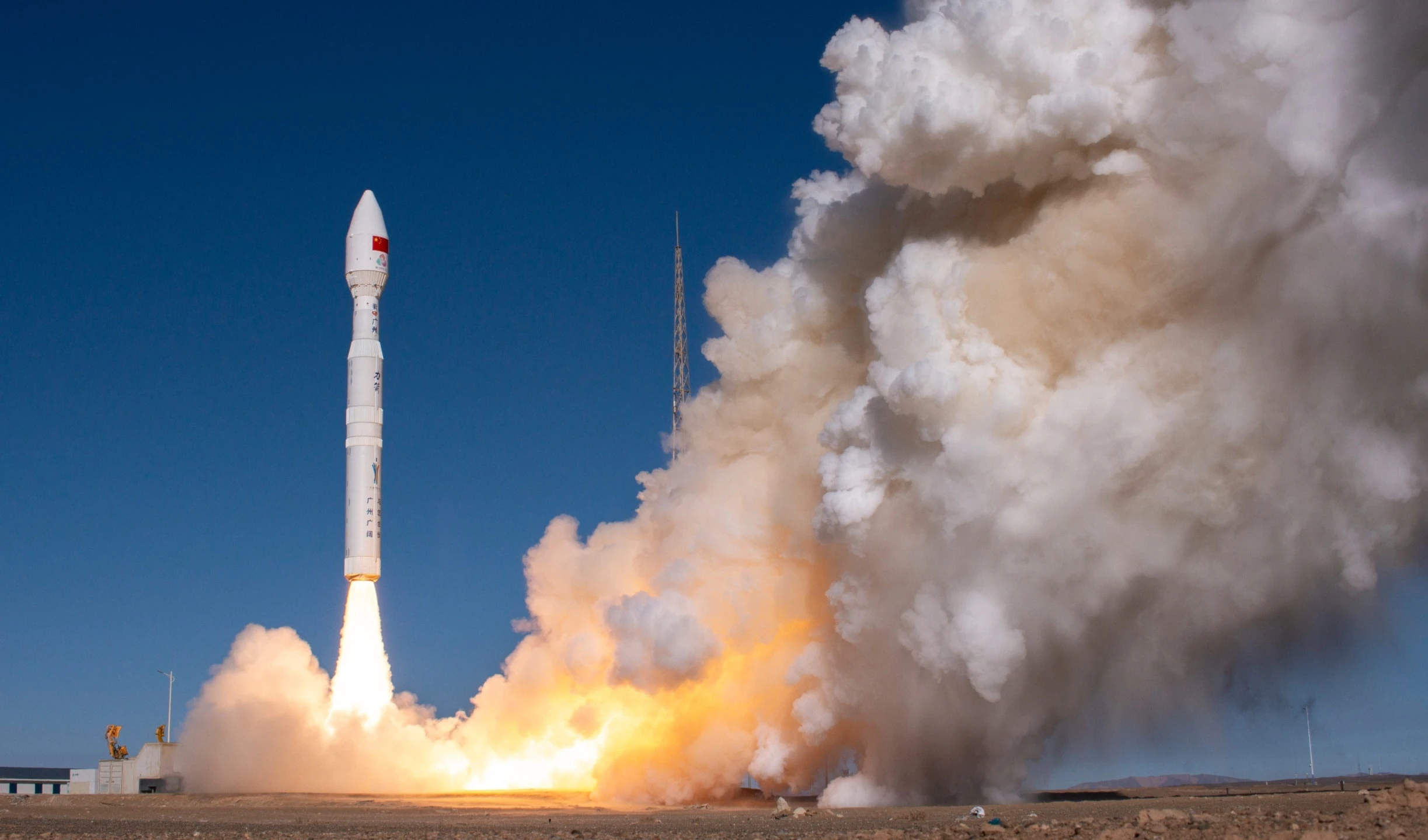China tests a non-nuclear 'hydrogen bomb'
China has tested a hydrogen-based, non-nuclear bomb using magnesium hydride, marking a new phase in Chinese thermal weapons development. Here are the details.
-

The sun rises over flags at Tiananmen Square ahead of the closing ceremony for the Chinese People's Political Consultative Conference held at the Great Hall of the People in Beijing, on March 10, 2025. (AP Photo/Ng Han Guan)
China has successfully carried out field tests of a hydrogen-based non-nuclear bomb, signaling a significant step forward in the country’s development of Chinese thermal weapons.
Conducted by researchers at the 705 Research Institute of the Chinese State Shipbuilding Corporation (CSSC), the tests highlight China's growing capability in deploying advanced, non-nuclear explosives amid increasing US-China tensions.
Chinese media reported on April 20 that a controlled field test of the new bomb had been completed. The device, weighing just 2 kg, produced a fireball exceeding 1,000 degrees Celsius, sufficient to melt brass and aluminum alloys.
Read next: China to launch new crewed mission into space this week
Reports added that this bomb uses magnesium hydride, a solid-state material that releases large amounts of hydrogen when heated.
How does the Chinese Thermal weapon work?
As mentioned in the report, the explosion mechanism relies on chemical combustion rather than a thermonuclear reaction. Upon detonation, magnesium hydride decomposes, releasing hydrogen gas that ignites and sustains combustion for over two seconds.
By contrast, a comparable TNT explosion produces a flash lasting only 0.12 seconds. The non-nuclear explosive tests demonstrated that while the explosive force was only 40% of TNT, the heat generated was significantly higher, creating a prolonged thermal chain reaction capable of damaging dispersed enemy forces, equipment, drones, or infrastructure over a wide area.
Non-nuclear explosive power and tactical applications
Although this new weapon cannot be classified as a hydrogen bomb in the thermonuclear sense, it offers substantial advantages. The device requires minimal energy to ignite, spreads rapidly, and does not fall under nuclear treaty restrictions, allowing China to further develop and potentially deploy such weapons without violating international agreements.
It is worth noting that magnesium hydride was initially developed for peaceful applications like providing energy in remote areas, but has now found military uses. China’s advancements have made production safer and more affordable, with up to 150 tons produced annually at a plant in Shaanxi Province.
Read next: Chinese warships 'ready for open house' ahead of PLA Navy anniversary
Reports didn't specify if and when the People’s Liberation Army of China will adopt this new weapon. However, the successful tests indicate China's lead in exploring non-nuclear thermal weapons. The technology could play a significant role in future military scenarios, given its demonstrated power and unique characteristics.
China’s military buildup comes amid growing US-China tensions, especially over Taiwan. As Washington shifts its focus from other conflicts to counter China, Beijing is expanding its arsenal. In 2024, China also unveiled the HQ-19 air defense system, designed to intercept ballistic and hypersonic missiles, which Chinese officials claim could outperform American systems.

 3 Min Read
3 Min Read










